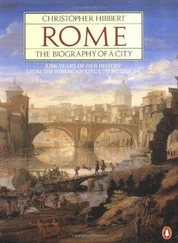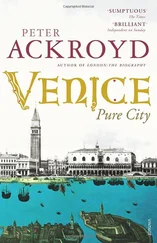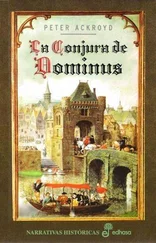Peter Ackroyd - London - The Biography
Здесь есть возможность читать онлайн «Peter Ackroyd - London - The Biography» весь текст электронной книги совершенно бесплатно (целиком полную версию без сокращений). В некоторых случаях можно слушать аудио, скачать через торрент в формате fb2 и присутствует краткое содержание. Год выпуска: 2000, ISBN: 2000, Жанр: Биографии и Мемуары, на английском языке. Описание произведения, (предисловие) а так же отзывы посетителей доступны на портале библиотеки ЛибКат.
- Название:London: The Biography
- Автор:
- Жанр:
- Год:2000
- ISBN:9781400075515
- Рейтинг книги:5 / 5. Голосов: 1
-
Избранное:Добавить в избранное
- Отзывы:
-
Ваша оценка:
- 100
- 1
- 2
- 3
- 4
- 5
London: The Biography: краткое содержание, описание и аннотация
Предлагаем к чтению аннотацию, описание, краткое содержание или предисловие (зависит от того, что написал сам автор книги «London: The Biography»). Если вы не нашли необходимую информацию о книге — напишите в комментариях, мы постараемся отыскать её.
London: The Biography — читать онлайн бесплатно полную книгу (весь текст) целиком
Ниже представлен текст книги, разбитый по страницам. Система сохранения места последней прочитанной страницы, позволяет с удобством читать онлайн бесплатно книгу «London: The Biography», без необходимости каждый раз заново искать на чём Вы остановились. Поставьте закладку, и сможете в любой момент перейти на страницу, на которой закончили чтение.
Интервал:
Закладка:
The less controversial documents of historians and chroniclers add detail to this picture of legendary munificence. Ecclesiastical records reveal that a synod was held, either in London or Verulamium, in 429; since the assembly was called to denounce the heresies of a British monk, Pelagius, it is clear that there was still a thriving religious culture in the regions bordering upon London.
Some twelve years later, according to a contemporaneous chronicle, the provinces of Britain accepted Saxon domination. Although that source is silent on the fate of London, it seems to have retained its independence as a city-state. By the middle of the sixth century, however, the city can be assumed to have accepted Saxon rule. Large parts of the walled area were employed as pasture, and the great public buildings were no doubt used as marketplaces, or stockades for cattle, or as open spaces for the wooden houses and shops of a population living among the monumental ruins of what was already a distant age. There is a wonderful Saxon poem on the material remnants of just such a British city; they are enta geweorc , the “works of giants,” the shattered memorials to a great race which passed away hund cnect -a hundred generations ago. In the description of broken towers and empty halls, of fallen roofs and deserted bath-houses, there is a combination of sorrow and wonder. There are intimations here, also, of another truth. The stone fabric of this ancient city has been dissolved by wyrde or “destiny,” and age; it has not been violently attacked or pillaged by marauders. The Saxons were not necessarily destroyers, therefore, and this poem displays a genuine reverence for antiquity and for a beohrtan burg , “bright city,” where heroes once dwelled.
We can infer, in turn, the lineaments of Saxon London. A cathedral church was built here, and the palace of the king was maintained on a site now claimed by Wood Street and Aldermanbury. Seventh-century records mention a “king’s hall” in London, and two centuries later it was still known as “that illustrious place and royal city”; the location of the royal palace beside the old Roman fort in the north-west of the city suggests that its fortifications had also been maintained. But there is even more striking evidence of continuity. One of the most important archaeological discoveries of recent years has been that of a Roman amphitheatre upon the site of the present Guildhall; this is exactly the location where the Saxons were known to hold their folkmoots, in an area always specified as being to the north-east of the cathedral. It seems certain, therefore, that the Saxon citizens used the ancient Roman amphitheatre for their own deliberations; it throws a suggestive and curious light upon their relationship to a remote past, that they should sit and argue upon stone rows erected more than two centuries before. It is no less suggestive, of course, that the modern Guildhall is erected upon the same site. There is evidence, at the least, for administrative permanence. It seems very likely, in turn, that the great walled city was known as the centre of authority and of power.
This would help to explain the location of the thriving Saxon town, Lundenwic- wic meaning “marketplace”-in the area now known as Covent Garden. A typical Saxon community, in other words, had grown up just beyond the walls of the powerful city.
We may imagine several hundred people, living and working in an area from Covent Garden to the Thames. Their kilns and pottery have lately been found, together with dress pins and glass beakers, combs, stone tools and weights for their looms. A butchery site has been excavated in Exeter Street, off the Strand, and farm buildings in Trafalgar Square. All the evidence suggests that a flourishing commercial area was, therefore, surrounded by small settlements of farmers and labourers. The names and sites of Saxon villages are still to be heard within the districts of a much greater London, Kensington, Paddington, Islington, Fulham, Lambeth and Stepney among them. The very shape and irregular street line of Park Lane are determined by the old acre strips of the Saxon farmers. Long Acre, too, reflects that pastoral tradition. It was an extended community, therefore, and it may have been of Lundenwic-rather than of London-that Bede spoke when he described it as situated “on the banks of the Thames … a trading centre for many nations who visit it by land and sea.”
Documents dated 673-85 are concerned with the trade regulations to be observed by the men of Kent when they barter in Lundenwic. Gold coins stamped “LONDUNIU” were being used in the same period, so that there was no necessary disparity between administrative London and commercial Lundenwic. Similarly a continual process of assimilation and absorption was maintained between erstwhile Britons and Saxon settlers, achieved by intermarriage and peaceful commerce. The evidence for this lies in the most reliable of sources, language itself, since many old British words are to be found in “Saxon” English. Among them are “basket,” “button,” “coat,” “gown,” “wicket” and “wire,” so it can be surmised that skill in textile and wicker-work can best be attributed to the Britons. Another English word testifies to the mixed nature of London: the name Walbrook is derived from Weala broc , “brook of the Welsh,” which suggests that there was still a defined quarter for the “old Britons” in their ancient city.
Bede had said that “Londuniu” was the capital of the East Saxons, but over the period of middle Saxon rule the city seems to have accepted the authority of any king who was dominant within the region-among them kings of Kent, Wessex and Mercia. It might almost be regarded as the commercial reward for any successful leader, together with the fact that the walled city was also the traditional seat of authority. Given this changing pattern of sovereignty, however, it is not perhaps surprising that the main source of continuity lay within the Christian Church. In 601, four years after the arrival of Augustine, Pope Gregory proclaimed London to be the principal bishopric in all Britain; three years later Ethelbert of Kent erected the cathedral church of St. Paul’s. There follows a bare chronicle of ecclesiastical administration. In the year when St. Paul’s was erected Augustine, Archbishop of Britain, consecrated Mellitus as bishop of London; the citizens then formally became Christian but, thirteen years later, Mellitus was expelled after a change of royal rule. The innate paganism of London, for a while, reasserted itself before being eventually restored to the Roman communion.
And then came the Danes . They had plundered Lindisfarne and Jarrow before turning their attention to the south. The Anglo-Saxon Chronicle records that in 842 there was “great slaughter in London,” a battle in which the Vikings were beaten back. Nine years later they returned and, having pillaged Canterbury, sailed up the Thames and with a fleet of 350 ships fell upon London. The city wall along the river may well have been already in ruinous condition but, even if the Saxons had been able to mend it, the defences were not enough to withstand the army of invaders. London was entered and pillaged. Many of the citizens may already have fled; those who remained were put to the sword, if Viking custom was followed, and their huts or shops consigned to the flame. Some historians have considered that the events of 851 marked a decisive moment in London’s history, but this is perhaps to misunderstand the nature of a city which is perpetually rising from flame and ruin. Indeed it has been defined throughout its history by such resurrections.
The invaders returned sixteen years later. Their great army moved through Mercia and East Anglia intent upon capturing Wessex; in 872 they built a camp near London, no doubt to protect their warships along the river, and it seems likely that their purpose was to control London and the Thames basin in order to exact tribute from neighbouring kingdoms. Certainly they occupied the city itself, which was used as a military garrison and storage base. Here they remained for fourteen years. This was not a bare ruined city, therefore, as some have suggested, but once more a busy centre of administration and supply. The Norse commander, Halfdere, minted his own silver coinage which, interestingly enough, is based upon Roman originals. The tradition of literal money-making in London had been preserved since that distant period, testifying once again to the organic continuity of its financial life. Coins were minted in London for Alfred, in his role as client king of Wessex. The native inhabitants may not have been as fortunate as Alfred; from the evidence of coin hoards buried in the first year of Norse occupation, the richer citizens ran for their lives along with every other Englishman who was able to flee.
Читать дальшеИнтервал:
Закладка:
Похожие книги на «London: The Biography»
Представляем Вашему вниманию похожие книги на «London: The Biography» списком для выбора. Мы отобрали схожую по названию и смыслу литературу в надежде предоставить читателям больше вариантов отыскать новые, интересные, ещё непрочитанные произведения.
Обсуждение, отзывы о книге «London: The Biography» и просто собственные мнения читателей. Оставьте ваши комментарии, напишите, что Вы думаете о произведении, его смысле или главных героях. Укажите что конкретно понравилось, а что нет, и почему Вы так считаете.












